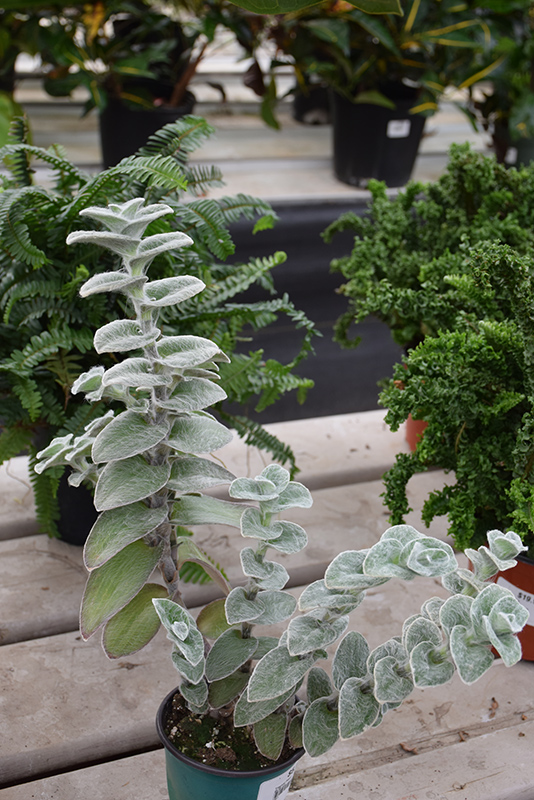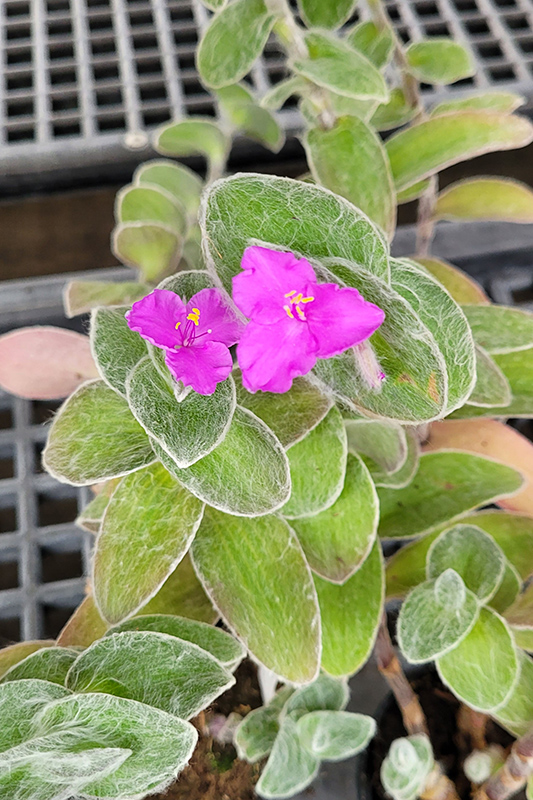Height: 12 inches
Spread: 20 inches
Sunlight:
![]()
![]()
Other Names: White Velvet, White Gossamer Plant
Description:
This evergreen, erect perennial is predominantly grown for its foliage; olive to gray-green leaves are densely covered with silver-white, woolly hairs; small bright purple-pink flowers appear in summer; low maintenance and easy to grow
Features & Attributes
Cobweb Spiderwort features dainty fuchsia flowers with gold anthers at the ends of the stems from early to mid summer, which emerge from distinctive ruby-red flower buds. Its attractive tomentose oval leaves emerge olive green, turning grayish green in color with hints of silver throughout the year.
This is an herbaceous evergreen houseplant with an upright spreading habit of growth. Its relatively fine texture sets it apart from other indoor plants with less refined foliage. This plant may benefit from an occasional pruning to look its best.
Planting & Growing
When grown indoors, Cobweb Spiderwort can be expected to grow to be about 12 inches tall at maturity, with a spread of 20 inches. It grows at a fast rate, and under ideal conditions can be expected to live for approximately 10 years. This houseplant will do well in a location that gets either direct or indirect sunlight, although it will usually require a more brightly-lit environment than what artificial indoor lighting alone can provide. It prefers dry to average moisture levels with very well-drained soil, and may die if left in standing water for any length of time. This plant should be watered when the surface of the soil gets dry, and will need watering approximately once each week. Be aware that your particular watering schedule may vary depending on its location in the room, the pot size, plant size and other conditions; if in doubt, ask one of our experts in the store for advice. It will benefit from a regular feeding with a general-purpose fertilizer with every second or third watering. It is not particular as to soil type or pH; an average potting soil should work just fine.
There are many factors that will affect the ultimate height, spread and overall performance of a plant when grown indoors; among them, the size of the pot it's growing in, the amount of light it receives, watering frequency, the pruning regimen and repotting schedule. Use the information described here as a guideline only; individual performance can and will vary. Please contact the store to speak with one of our experts if you are interested in further details concerning recommendations on pot size, watering, pruning, repotting, etc.
-- THIS IS A HOUSEPLANT AND IS NOT MEANT TO SURVIVE THE WINTER OUTDOORS IN OUR CLIMATE --

